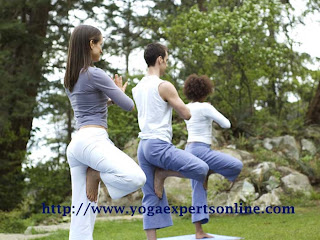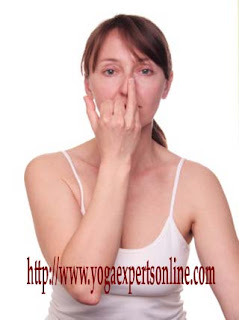Pranayam or, yogic breath control exercise is one out of the three main aspects of yoga, the other two being yoga asanas (exercises) and dhyana (meditation). According to yogis, it is the technique to ‘silence the breath’. In simple words we can explain this by saying that yogic breathing involves reducing the number of respiration made per minute. The process of respiration involves inhalation and exhalation (that is breathing in and breathing out), and a normal person breathes around 16 to 20 times in a span of 60 seconds. The aim is to reduce this figure to around six to eight.
While the process of breath control may seem easy compared to the strenuous asanas, it is actually not so. In order to practice breath regulation one will have to strictly adhere to some guidelines. Usually these guidelines are mentioned and supervised by the trainers who impart the yoga lesson. Firstly, it is vital that any diseases or, injury suffered recently or, in the process of recovery should be mentioned to the trainer. Practicing pranayam in ill health produces reverse effects. Also, it is essential to note that the stomach is not full during breath regulation practice.
Sitting in a comfortable relaxed position is necessary before commencing pranayam. This reduces chances of exhaustion during practice. As the breathing exercises begin, one should make sure that the time mentioned for each inhalation and exhalation is the same. It is granted that a beginner would make mistakes, but not making an attempt to rectify them will render the practice meaningless and in the long run may harm the person in many ways. The timing should be such that beginners don’t feel shortage of breath at any moment and the time may be decreased as the learner gets better.
The inhalation and exhalation process must be complete in every round. The lungs should be full with each inhalation and maximum possible amount of air should be expelled with each exhalation. At no point should the lungs remain partially full while inhaling or, partially empty while exhaling. There should be a uniform flow of incoming and outgoing breath. No forceful efforts should be made while practice. Pranayam is supposed to calm the system and not agitate it. Therefore, one must maintain calm and do as much as his body can handle. Knitting of brows, bulging eyes, uncomfortable expressions etc should be avoided. If it happens involuntarily, it means that something is not going right and practice should be halted.
If at any point one feels suffocated, he/she should slowly stop. Pranayam is such that one achieves silencing of breath without feeling exhaustion at any moment. One must enjoy the practice and not get affected by it. It is alright to keep the eyes closed as it will help in improving concentration towards practice. Sometimes mantras are given to recite during breath regulation exercises, while the eyes remain closed. But this generally happens in the advanced stages. These guidelines are simple but of great importance. Therefore, one must bear them in mind to experience the best that pranayam has to offer.
While the process of breath control may seem easy compared to the strenuous asanas, it is actually not so. In order to practice breath regulation one will have to strictly adhere to some guidelines. Usually these guidelines are mentioned and supervised by the trainers who impart the yoga lesson. Firstly, it is vital that any diseases or, injury suffered recently or, in the process of recovery should be mentioned to the trainer. Practicing pranayam in ill health produces reverse effects. Also, it is essential to note that the stomach is not full during breath regulation practice.
Sitting in a comfortable relaxed position is necessary before commencing pranayam. This reduces chances of exhaustion during practice. As the breathing exercises begin, one should make sure that the time mentioned for each inhalation and exhalation is the same. It is granted that a beginner would make mistakes, but not making an attempt to rectify them will render the practice meaningless and in the long run may harm the person in many ways. The timing should be such that beginners don’t feel shortage of breath at any moment and the time may be decreased as the learner gets better.
The inhalation and exhalation process must be complete in every round. The lungs should be full with each inhalation and maximum possible amount of air should be expelled with each exhalation. At no point should the lungs remain partially full while inhaling or, partially empty while exhaling. There should be a uniform flow of incoming and outgoing breath. No forceful efforts should be made while practice. Pranayam is supposed to calm the system and not agitate it. Therefore, one must maintain calm and do as much as his body can handle. Knitting of brows, bulging eyes, uncomfortable expressions etc should be avoided. If it happens involuntarily, it means that something is not going right and practice should be halted.
If at any point one feels suffocated, he/she should slowly stop. Pranayam is such that one achieves silencing of breath without feeling exhaustion at any moment. One must enjoy the practice and not get affected by it. It is alright to keep the eyes closed as it will help in improving concentration towards practice. Sometimes mantras are given to recite during breath regulation exercises, while the eyes remain closed. But this generally happens in the advanced stages. These guidelines are simple but of great importance. Therefore, one must bear them in mind to experience the best that pranayam has to offer.



0 comments:
Post a Comment